On Sunday, April 17, 1977, the PBA opened its third season with elaborate and star-studded opening ceremonies. A pair of games came after – the Presto Ice Cream Flavorites going up against the Royal Tru Orangemen at 5PM, and a 7:30PM setto featuring the Crispa Redmanizers and the Toyota Tamaraws.
But the bigger story that evening was the aftermath of the match between the two archrivals. A brawl ensued immediately after the game that lasted 15 minutes and brought all the personalities involved to jail for one night.
For this week’s Throwback Thursday feature, The Rivalry recounts the details of this major fiasco that hit the front-page headlines of major dailies that time.
Duopoly dominance
In the first two seasons of the PBA, Crispa and Toyota were the only teams to have made it to the Finals in all six conferences. The then Comets won the first two stagings in 1975, but the Redmanizers came up with their own four-peat, winning the 1975 3rd conference and the coveted 1976 grand slam.
The rivalry wasn’t just inside the court – the players avoided each other even in social venues outside. In Episode 31 of the weekly sports show “An Eternity of Basketball (AEOB),” Philip Cezar admitted that whenever he and his Crispa teammates would see Toyota players in public places like clubs and discotheques, they would leave and look for other venues instead. Atoy Co, who guested on AEOB’s Episode 14, also said that Crispa players didn’t buy any type of Toyota vehicle and would opt for a Mitsubishi or a Ford instead. The same applied to Toyota players, as Gil Cortez disclosed in Episode 53 of the same show that it was highly unlikely for them to be wearing Crispa shirts and Walk Tall jeans.
There was no denying both teams were a cut above the rest of the field. Crispa normally had the deeper bench, but Toyota would end up with the better import reinforcement. It was difficult for other teams to compete against the two as most of the top-tier players – either veterans or rookies, would prefer to go to the Floro or Silverio ballclubs.
That year, Crispa paraded Armando Torres as their only rookie. Bogs Adornado was relegated to the reserve list because of a knee injury he suffered in the second conference of the previous season. Toyota, on the other hand, felt they needed to bring in new blood to the team to boost their chances of keeping up with their rivals. They brought in from their farm team, Crown Motors, a trio of big names – Abe King, Emerito Legaspi (the 1976 MICAA MVP and Discovery Player of the Year), and Pablo Javier in the middle of the first conference. They also strengthened their frontline with the acquisition of former 1975 national team member Nic Bulaong, former Crispa player Jess Sta. Maria, who came from the defunct team, Fiberlite, and veteran Rino Salazar from Tanduay. Released were Jake Rojas, Elias Tolentino and Rollie Marcelo.
It wasn’t that the other teams didn’t try – at the start of the 1977 season, Presto scored a major coup by acquiring superstar big man Manny Paner from RTO. Paner was offered a two-year, Php 8,000 monthly contract plus a new car, making him the highest-paid player in the PBA that time.
U/Tex and 7/Up also tried to beef up their respective rosters by engaging in the first consummated trade in the league. The deal featured the Wranglers’ top offensive scorer, Danny Florencio and steady guard Jimmy Otazu being swapped for the Uncolas’ Tino Reynoso and Caloy Rodriguez. While there had been player movements in the past, this was through free agency. The Wranglers and Uncolas were the first to negotiate a player trade approved by the PBA.
Changes
At the start of the 1977 season, the PBA adopted a three-referee system, a major innovation that even the National Basketball Association (NBA) adopted on an experimental basis in 1978, and permanently in 1988. Likewise, the PBA brought in NBA referee Manny Sokol, ranked fourth in the list of professional basketball referees in the US. He conducted a 3-day clinic on officiating as the PBA focused on enhancing the alertness and decisiveness of the officials during the game. This was also part of Commissioner Leo Prieto’s goal of continuous improvement in officiating, a sore issue among all the teams.
To improve gate attendance, the PBA also started issuing out membership cards for loyal customers. The card gave the members the opportunity of purchasing tickets for specific, choice seats for every game in the third season.
To ensure better competition, the PBA also adopted the bracketing system for the next two conferences for the first time. This meant that the eight remaining teams in the league (Concepcion Carrier disbanded at the end of the 1976 season) were spread into two groups of four. Rounding up Group A were Toyota, Presto, Royal Tru Orange and Mariwasa. Group B was headed by Crispa with Tanduay, U/Tex and 7/Up completing the cast. While every team was to face their opponent twice, regardless of bracket, the top two teams from each bracket would automatically qualify for the semifinals. Identifying the teams per bracket was based on the performance of the teams from the previous season.
The first conference was the All-Filipino, although the league allowed Mariwasa/Noritake and Presto to be reinforced by an import no taller than 6’6. The Coseteng team brought in Billy Robinson, who also played for the franchise in the first two seasons. The product of University of Portland was a long-time Philippine basketball import, having suited up for the Coseteng team since their MICAA days. The prolific Robinson, who averaged 21.2 points and 13.53 rebounds in 70 games from 1975 to 1976, was expected to lead the Porcelain Makers on both ends of the court. On the other hand, Oliver suited up for the Flavorites to join forces with Paner, Pribhdas and Ritualo in their formidable frontline.
- Spiking popularity: Comparing volleyball’s following in the Philippines and the US
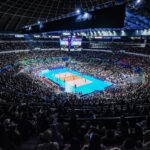
- Cool sweep: How Creamline’s winning formula led to a 7th PVL crown
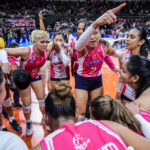
- Pampanga Dragons celebrate 25th anniversary of MBA championship
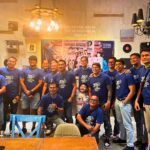
- NBA app launches personalization features, live game experience

- Dante Silverio celebrates 86th birthday in style
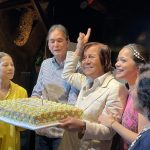
Opening day
As usual, there was a parade of the players during the opening ceremonies attended by more than 25,000 fans. They were accompanied by their muses to lend glamor and beauty, namely: Susan Dagohoy, Ma. Luisa Alincastro, Mutya ng Pilipinas and future actress Baby Delgado, 1976 Binibing Pilipinas and UP BS Biology summa cum laude graduate Lilibeth de Padua, Maya dela Cuesta – the future wife of actor Ace Vergel, Zenaida Enriquez, Crispy Santamaria, Malou Estrella and Gina Squillantini.
With the acquisition of Paner and grizzled guard Johnny Revilla, observers claimed that the Flavorites were the dark horse team of the tournament. Their rotation featured bigs Pribhdas, Ritualo and Paner while they also had a battery of scorers in Lore Tolentino, Art Herrera, Ernesto Morales and Revilla. The Orangemen, on the other hand, lost Paner but were able to acquire Marte Samson from Tanduay. With Oliver and Paner manning the fort, the Gokongwei franchise scored an impressive 122-111 victory to put themselves in the limelight as one of the favorites to enter the playoffs. Tolentino, the second leading scorer of the PBA in the 1976 season, also contributed heavily to Presto’s cause.
The second game saw another war to be waged. They last played on December 21, 1976 with Crispa hammering out a 110-92 victory to win the All-Philippine Championship. Toyota, with its refurbished lineup, was set to challenge the Redmanizers’ stronghold. The game was close all the way, with no team leading by more than 2 points at the end of each quarter.
But the game went out of control when Fort Acuña was assessed with an offensive foul off Freddie Hubalde with only three seconds remaining and the game tied at 121. Coach Dante Silverio didn’t field a replacement immediately while uttering unprintable words to the game referee, forcing zebra Estefanio Bernos to call a technical foul on the fashionable mentor, a move that was validated by technical committee official, Crispin Aldiosa. Silverio later explained that he only said “buti nakita mo” (good thing you saw this) after Bernos told him that Toyota only had 4 players on the court. Atoy Co sank the technical free throw, giving Crispa the win.
Co topscored for Crispa with 27 points. Hubalde, who took over the starting role from Adornado, added 26 while Soriano tallied 21. Toyota’s Arnaiz led all scorers with a game high 35 points, and was superbly assisted by the comebacking Rocha who chipped in 20. Fernandez and Jaworski contributed 16 and 15 apiece.
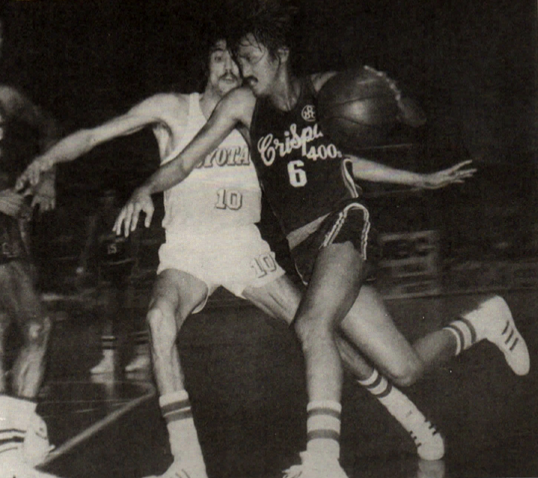
Postgame free-for-all
Tension remained high after Co sank the technical charity. Crispa let the remaining three seconds pass on as the Tamaraws continued complaining to the game officials.
With both teams heading toward the dugout, the chaos started. There was pandemonium as everyone – from the players to the fans to policemen to security guards to kibitzers – seemed to be involved. Everyone, including those in the upper box sections of the Big Dome, were able to go down the court and join the melee.
Just outside the dugout, Toyota’s Ramon Fernandez and Co exchanged punches, with Fernandez getting the worse end with a cut just below his right eye. Crispa’s Rudy Soriano received a couple of lumps over his right eye and beside his mouth. He also got bruises in the neck and arms. Soriano’s teammate, Rey Franco, another noted enforcer, had a swollen right ear coming from a punch. He said it was Sonny Jaworski who was responsible for the punch, a claim that the Big J flatly denied. “Basta nakita ko na lang, nagkakagulo. I was even trying hard to pacify them,” explained the Toyota skipper.
Curiously, noted Toyota bruiser Oscar Rocha, did not take part in the post-game scuffle. Rocha missed the entire 1976 season because of a nine-month suspension handed to him by the PBA after being involved in a fight in the 1975 All-Philippine finals. “Break nga ako ng break… tinatamaan din ako pero hindi ako gumaganti,” Rocha said in an interview.
Aftermath
The players went their separate ways after the game. But sometime late morning of Monday, April 18, the police went to the respective houses of all the players in the previous night’s game. In Crispa’s case, they were fetched at the Araneta Coliseum since they had a light practice there, recalled Varela. Rounded up were Crispa’s Co, Cezar, Franco, Soriano, Torres, Hubalde, Tito Varela, Abet Guidaben, Joy Dionisio, Cris Calilan, Rey Pages, David Cezar, and Bernie Fabiosa, and Toyota’s Jaworski, Fernandez, Rocha, Sta. Maria, Acuña, Francis Arnaiz, Ompong Segura, Gil Cortez, Orly Bauzon and Boy Clariño.
The players were brought to Camp Crame in the early afternoon. Cortez, in an interview with The Rivalry, remembered the players from opposing camps were hauled into an office that simulated a court room. The discussion remained heated as both players kept pointing fingers at one another. “Para kaming mga bata na nagtuturuan kung sino may kasalanan,” Cortez with a laugh, admitted. “Ang ingay namin kasi ayaw magpatalo ng bawa’t kampo. Ganun kainit, even if it was already more than 12 hours after the incident.”
Varela told The Rivalry how Metrocom Chief General Prospero Olivas was asking everyone if they have any complaint to file against one another. When no one responded despite repeated prodding, Olivas frustratingly banged the gavel to quiet everyone and ordered that everyone be brought behind bars at Fort Bonifacio. The players were hauled in the Honda Harabas vehicles of the Metrocom and were put in a large cell with one another.
There was no dinner served to the players by the police. But the management of both teams made sure the players wouldn’t go hungry. First to arrive was Crispa’s supper. Tito Varela remembered that the food, made up of sumptuous Filipino dishes – crispy pata, crabs and sugpo – coming from Casa Marcos. “Hindi kami pinabayaan ni Boss Danny (Floro), nagpadala ng masarap na pagkain para d kami magutom.” Toyota wasn’t to be outdone though. Cortez recalls having “surf and turf” (steak and shrimps) from Prince Albert from the Hotel Intercontinental.
There was light banter between the two parties. Clariño got scolded for his loud voice. Jaworski lightened up the mood further after seeing Varela’s visitor, shouting, “may bisita ka, Tito, dala wig mo!” Varela laughed at Jaworski’s jest, explaining to The Rivalry that he was in good terms with the Big J and that he was actually a fan dating back to the latter’s playing days at Meralco in the MICAA.
The players though opted to stay with their respective groups though and opted to kill the time by playing cards and chatting with one another. Varela and Cortez revealed that since they were with their respective teammates, the atmosphere wasn’t tense and was like a bonding session.
Olivas issued a stern statement to the media. “This should serve as a warning to all those concerned that we are determined to drastic measures against irresponsible sportsmen.” He added, “the problem with these players is that they don’t play real basketball. We have warned them in the past against rumbles.” It was in 1975 when Defense Secretary Juan Ponce Enrile issued a warning to erring players for repeated brawls during and after the game.
The PBA then fined both teams Php 5,000 each for their players’ involvement in the melee. Silverio was also penalized with a Php 1,000 fine for berating referee Bernos that led to the calling of the technical foul and the game’s outcome.
Prieto also took full responsibility. Chief legal counsel Rudy Salud told reporters that it was his job as Commissioner to have the teams go out separately from the court after the game, but he was “thrown off guard when some of the players from both sides shook hands after the game. This led to both teams simultaneously leaving for the dugout where the scuffle erupted.”
The Rivalry wishes to thank PBA Archives for the reference materials used in writing this piece.
